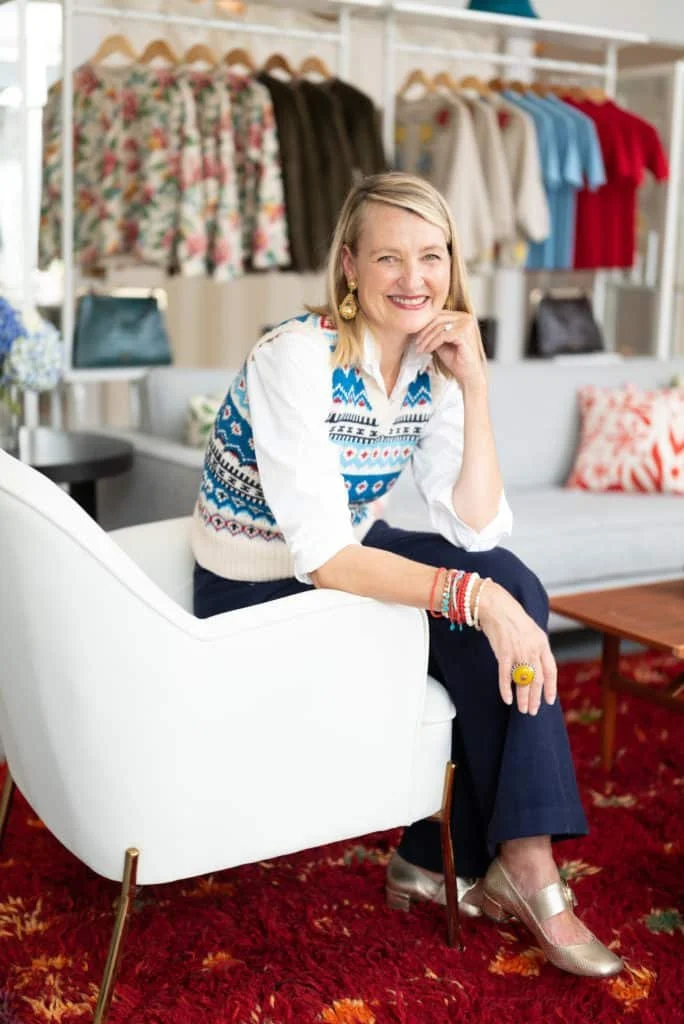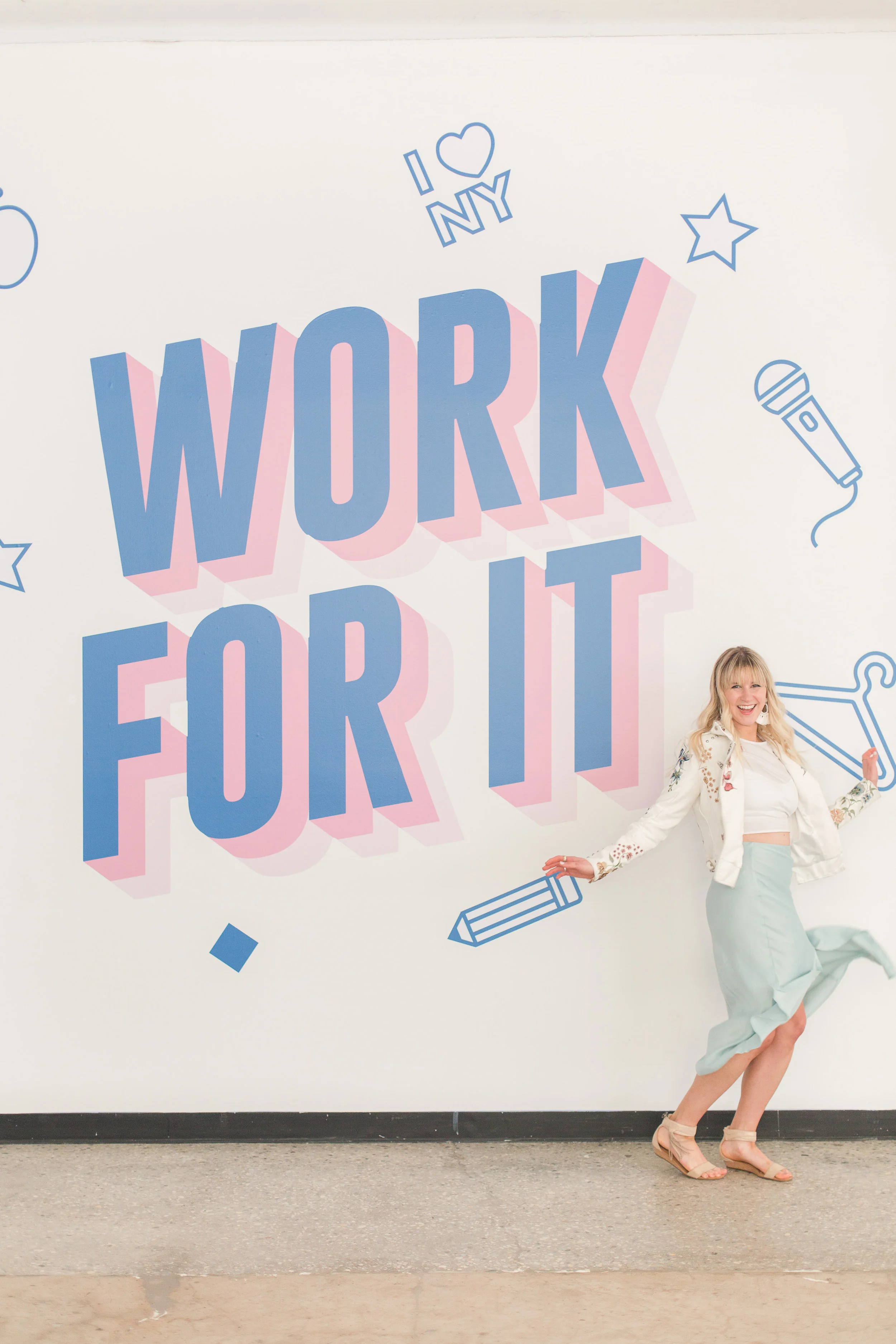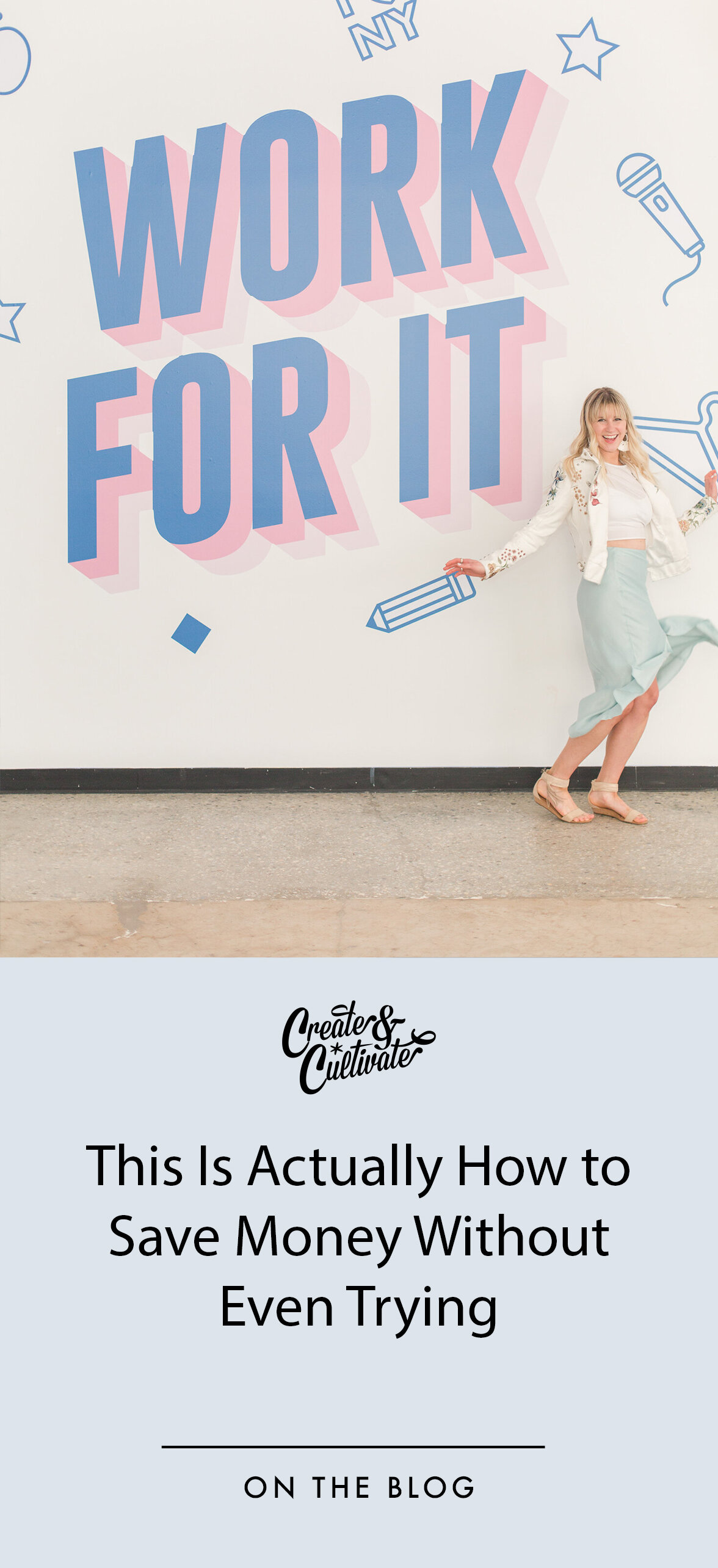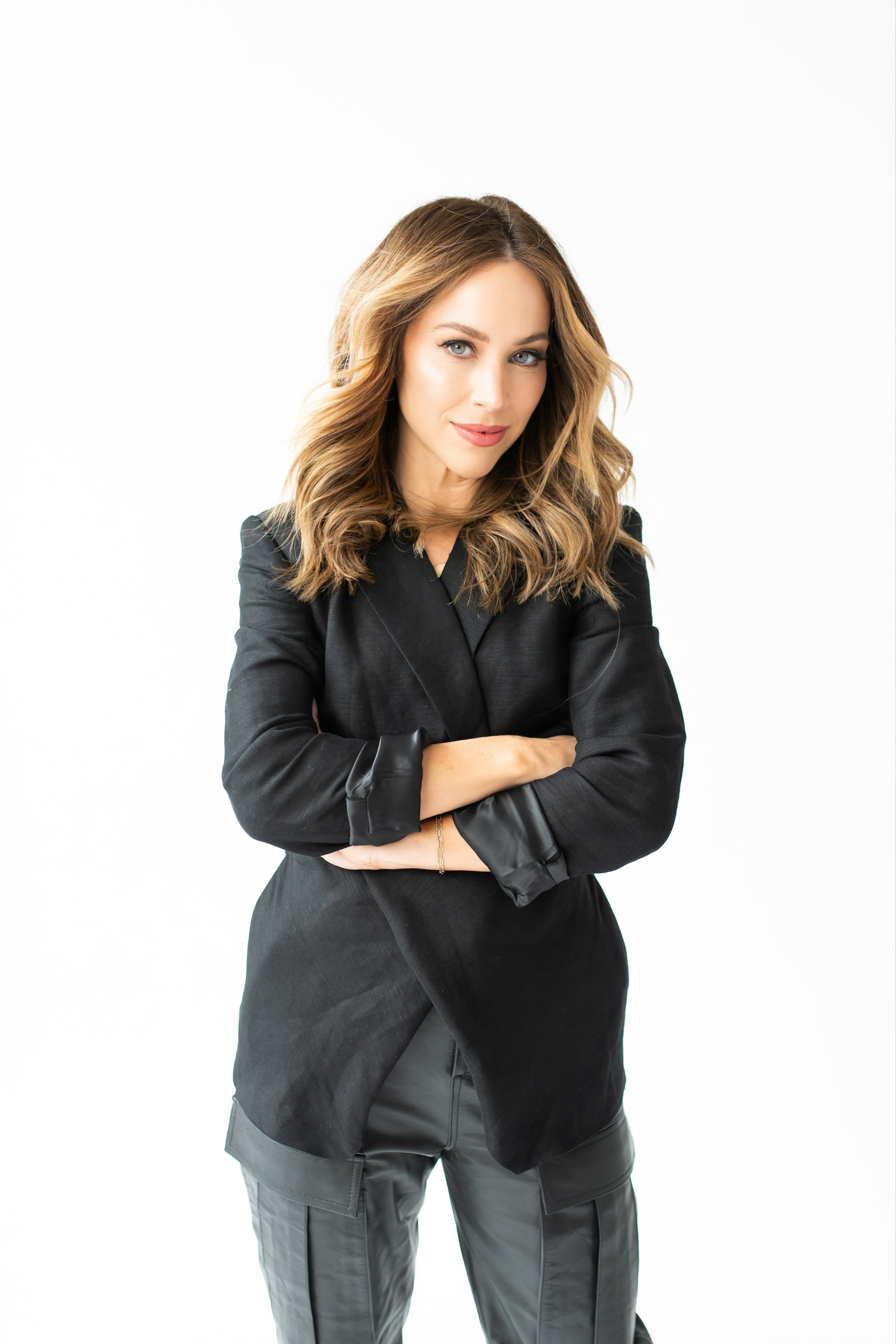Grow On: How to Double Your Revenue With Elyce Arons, Co-Founder and CEO of Frances Valentine
ABOUT THE EPISODE
Doubling your revenue is no easy task.
You need to set well-defined goals, create meaningful connections with your customers, and discover new distribution channels and marketing opportunities.
Which is something that Elyce Arons knows a thing or two about.
In the midst of a pandemic that has pummeled the fashion industry, the former Co-founder of Kate Spade has led the luxury lifestyle brand Frances Valentine to double (!) its revenue.
Needless to say, I can’t wait to chat with Elyce about how she’s grown the brand exponentially, including the old-school marketing strategy she tapped into to increase the brand’s sales by 40% (!).
EPISODE TOPICS
Her Second Act: Building Frances Valentine
Adapting to the New Online Retail Space
Why She Recommends a Mix of DTC, Wholesale & Retail
Why Pop-Ups Are the Best Way to Test New Markets
The Importance of Regional Retail Spaces
How She Doubled Her Revenue During the Pandemic
Where She Puts The Majority of Her Marketing Dollars
What She Pulls Inspiration From In The Design Process
Her Predictions on Major Fashion Industry Shifts
RESOURCES
To connect with Elyce Arons click HERE
To connect with Jaclyn Johnson click HERE
To learn more about Frances Valentine click HERE
To follow along with Create & Cultivate click HERE
To submit your questions call the WorkParty Hotline: 1-(833)-57-PARTY (577-2789)
LISTEN TO THE EPISODE
OTHER EPISODES YOU MIGHT LIKE . . .
THIS EPISODE IS BROUGHT TO YOU BY . . .
CDC Vaccine • Visit the CDC website CDC.gov for additional information you can trust about how COVID-19 vaccines can protect your entire family.
Shopify • Go to shopify.com/party for a FREE 14-day trial and get full access to Shopify’s entire suite of features.
Start Now—Everything You Should Be Doing to Save as Much Money Possible
The keyword? Automation.
Photo: Create & Cultivate
I’m going to humblebrag here; I’m pretty good at saving money. Moreover, I’m not the only one . According to this Fortune article, one in six millennials has at least $100K in savings. So what’s the trick? How do you make it easier to save?
I’ve tried numerous budgeting methods. Everything from detailed budget sheets that outlined where every dollar should go, to analyzing my bank statements each month to see where I can cut down on extra spending. As well-intentioned as these ideas are, I couldn’t stick with them. After a month or two, the task becomes tedious. Eventually, I’d give up and start over with another method, determined that this time, this one would stick.
Ultimately, saving money is not a complicated matter; you simply must spend less than you earn. A “good” budget is one you can maintain. Consistency is key. So how do you remain consistent? Automate your savings.
You need to make saving money as easy and automatic as possible. Otherwise, you’re not going to do it. The premise is straightforward: save a percentage of your income each month by diverting money directly into your savings account. That’s it!
But how much should you save? And how exactly do you do this? Read on to find out.
#1: Calculate Your Expenses
Total how much you spend on necessities — rent, food, utilities, gas/transportation, phone bill, etc. Next, determine how much you spend on optional, “nice-to-have” items or activities — clothing, entertainment, travel, etc.
#2 Find Your Net Monthly Income
This is the total amount of money you bring in after taxes. Subtract your total expenses from your net monthly income. How much is left? What percentage of your monthly income remains? Can you cut anything else to save a little more? Make sure to keep some wiggle room, however, because if you don’t, you will get fed up and won’t stick to the plan.
#3 Save 10–30% of Your Monthly Income
If you can save more, that’s great! If saving 10% feels likes a stretch, start small, even if it’s just $20 a month. However, I would challenge you to look at your expenses and really evaluate if all are necessary.
#4 Automate
Once you have this information figured out, the next step is to automate it.
If you get a monthly paycheck, send the percentage you’re saving directly into your savings account. The rest can be directly deposited into your checking account.
Here’s an example:
Monthly Net Income: $4,500
Monthly Expenses: $3,600
Remaining: $900
Automate. Move:
$900, or 20% of your monthly net income to be directly deposited into your savings account.
$3,600, or 80% of your monthly net income to be directly deposited into your checking account.
Now, you can spend what is your checking account (although that doesn’t mean you have to spend the entire amount each month). Also, don’t touch what is in your savings. Do everything you can to leave your savings account alone. Once your savings gets to a specific amount, take a portion and invest that money instead of keeping it in your bank account. That’s it!
A few words of caution: you might be tempted to manually put a specific amount into savings and checking each month instead of automating this task. Don’t do this. Why? Because you’re giving yourself a monthly task to do. And let’s be real, you’re not going to do this consistently. You’ll get busy and forget, or be tempted to put in $400 this month because of XYZ reasons.
Hold yourself accountable and automate this task. If you have to transfer money from your savings back into your checking account for a particular reason one month, that’s fine. However, make that a task you have to do occasionally, not the other way around. Limit the temptations to save less!
I’ve found this method to be the easiest and most straightforward way to save money each month. Experiment if this method works for you. Do you have another plan that works for you? Let me know! Leave a comment below or feel free to reach out to me on Instagram @KellieCockrell. In the meantime, cheers to saving money!
By: Kellie Cockrell
This post was originally published on November 6, 2018, and has since been updated.
Love this story? Pin the below graphic to your Pinterest board.
MORE ON THE BLOG
Show Me the Money: How to Get Funding and Scale Your Creative Business
From understanding capital to the prerequisites for funding.
Arielle Loren is the founder of 100K Incubator—the first business funding mobile app for women in both Apple and Google’s app stores. The story was part of her “Show Me the Money” workshop held at the Create & Cultivate Vision Summit in Miami.
Photo: Courtesy of Arielle Loren.
UNDERSTANDING CAPITAL AND HOW IT WORKS
(aka why your creative business needs money to scale!)
There are three categories of funding: grants, equity-based investments (what most investors require), and debt-based funding (business loans, lines of credit, etc.)
Let’s talk about debt though… there’s a difference between consumer debt for vacations and clothes—and strategically using a business loan as working capital for your business.
For example, if you charge a bunch of clothes on your credit card, those clothes can’t make you money and help you pay that back. You have to go to work and actually do that.
But if you invest the $5,000 you received from a business loan and turn it into $15,000 in sales, that means there’s a $10,000 gross profit. Now that’s worth considering a business loan, and it’s that mindset that you need to have when considering all funding options for your business.
PREREQUISITES FOR FUNDING
(aka what you need to get your money!)
Funding Budget
50-70% Advertising or Direct Revenue Generating Activities
30-50% Infrastructure—Sales Funnels, Photo and Video Shoots, Websites, Consultants, etc.
Average Personal Credit Score
Minimum 620 and up
Register Your Business Entity With Your State Government
LLC, S-Corp, C-Corp
Save money by registering directly on your state government’s website
Register Your Business for an Employer Identification Number (EIN) with the IRS
This is 100% FREE at irs.gov
Open Your Business Bank Account
Your Personal Finances and Business Finances Cannot Be Co-Mingled
File Your Taxes and Annual Report
THE 3 LEVELS OF FUNDING
(aka figure out where your business stands for the highest approval rates!)
Level 1: Zero (aka pre-revenue) to $3,000 per month in sales
Business Credit Cards
Personal Loans
Home Equity Loans or Lines of Credit
Crowdfunding
Level 2: $3,000 or more per month in sales
Pitch Competitions
Business Grants and Government Contracts
Government Small Business Loans
Payment Processor Loans
Private Business Loans
Business Lines of Credit
Level 3: $9,000 or more per month in sales
Angel Investing
Venture Capital
About the Author
Arielle Loren is the founder of 100K Incubator, the first business funding mobile app for women in both Apple and Google’s app stores. She’s helping 100,000 early-stage women entrepreneurs get funding for their businesses and scale to 100K+ in yearly sales. She is also a graduate of Harvard University, where she holds a master’s degree in Management and graduate certificate in Strategic Management. Additionally, she also holds a graduate certificate in International Business Management from Georgetown University and a bachelor’s degree in Social and Cultural Analysis and a certificate in Producing from New York University.
Visit 100kincubator.com for more information, download the app, and start your free trial.
MORE FROM THE BLOG
This Month in Money Moves: The RealReal, Away Luggage, Revolve, Reformation, Madewell (and the U.S. Women's Soccer Team)
From raising capital to going public, these female-owned or led companies are showing us how it’s done.
In this monthly series, we take a look at the female-owned or led businesses that are making serious moves in the $$$ department. From raising funds to going public, these women are showing us how it’s done and giving us all serious inspo to finish out this week like a true boss.
#SupportFemaleOwnedBusiness
The Real Real
Within minutes of debuting its initial public offering on Friday, stock for the popular secondhand luxury retailer, The RealReal jumped 50% raising $300 million. But this isn’t Julie Wainright’s first rodeo. The founder and CEO of The RealReal took Pets.com public in 2000. What a boss.
The U.S. Women's Soccer Team
The headlines have been blazing this week with news that the U.S. women’s soccer team are suing for equal pay after their historic win. Sen. Joe Manchin proposed a bill that would withhold funding from the 2026 men's World Cup—jointly hosted by the U.S., Mexico, and Canada—until the two teams are paid equally.
Here’s what ESPN told Broadsheet:
“FIFA will award $30 million in prize money for the Women’s World Cup. The men received $400 million last year. [FIFA president Gianni Infantino] said this week he wants to double the prize money for the women’s tournament by the next edition in 2023, but the gap between the genders could actually grow with FIFA expected to award $440 million for the men’s tournament in 2022.”
Does that seem fair to you? Sound out in the comments below.
Away Luggage
The founders of Away luggage are on a roll. Co-founder Jen Rubio was featured on the cover of Inc. Magazine after the brand became a unicorn after being valued at $1.4 billion after raising $100 million (they were also named one of Forbe’s 2018 Next Billion-Dollar Startups). This week Rubio and her co-founder Steph Korey are featured on Fortune's 40 Under 40 list. Congratulations, girls!
Revolve
One of our favorite online retailers renowned for their impressive social media and influencer parties (and trips around the world) surprised everyone this month when they announced their IPO and raised $212 million in their initial public offering. Color me impressed.
Madewell
In the spirit of IPOs, Madewell is also (reportedly) on track to announce theirs. According to a Reuters report, three sources confirmed that “J. Crew has hired banks to prepare for the public offering of the denim-centric brand, pegged for after Labor Day, as part of a strategy to revive the larger retailer.” This would position Madewell CEO Libby Wadle at the head of her own public company.
Reformation
While founder and CEO, Yael Affalo of Los-Angeles based clothing line, Reformation will remain CEO, the company will soon be majority-owned by private equity firm Permira Advisers. The brand is on track to deliver $150 million in sales this year.
Did we miss something? Share the money moves you’ve seen this month so we can add it to the list!
Money Matters: Daina Trout, CEO of Health-Ade Kombucha
“There is no shame in wanting money. Money gives you freedom to live the life you want.”
You asked for more content around business finances, so we’re delivering! Welcome to the first installment of Money Matters, our newest series dedicated to giving you an inside look at the pocketbooks of some of your favorite CEOs and entrepreneurs. In this series, you’ll learn what successful women in business spend on offices spaces and employee salaries, how they knew it was time to hire someone to manage their finances, and their best advice for talking about money.
Our first Money Matters guest is Daina Trout, CEO and co-founder of Health-Ade Kombucha. Daina is a huge advocate for being forward when talking numbers, so she’s an ideal woman to kick off the series. Below, she shares her financial story.
Where do you think is the most important area for a business owner to focus their financial energy?
First, you want to focus on growth; second, on profitability. On growth: It is very tough to get your company off the ground and to a place of increasing revenues from scratch, and it’s going to take every piece of your being to get it there (so you can’t be distracted by much else). Also, my experience has been that momentum is a real thing. The faster your company grows today, the faster it will grow tomorrow (at least in the beginning). It’s all hands on deck, full pedal-to-the-metal speed.
On profitability: You don’t want to wait too long for this, else you will be constantly raising money and diluting yourself, feeling like you’re in a never-ending rat race. But at the same time, nobody cares about a profitable business that isn’t growing, so you don’t want this to be your first #1 priority (unless you have one of those rare businesses that can do both from the start). You want to be an owner of a company that is growing and tightening at the same time. It’s important to strive for that balance.
“You want to be an owner of a company that is growing and tightening at the same time. It’s important to strive for that balance.”
What was your first big expense as a business owner?
Two things: People and manufacturing equipment. People do the work so you have to invest here to have a good business. I often wonder, though, if co-packing is better than manufacturing in-house. The capital intensity of owning your own manufacturing is seriously something to consider.
How did you decide what to pay yourself?
I talk about this all the time to fellow founders—it’s a major issue. And I think most are underpaying themselves. In the very beginning, this is hard, because you don’t usually have investment or profits, so you’re last on the list (we paid ourselves a meer $300 a month in the beginning, which covered basically nothing). Once you get investment or profits, though, it’s important to re-look at your compensation and your role. Think about what it would cost for the business to hire for this role in the marketplace. An experienced CEO in LA makes $250K+ on average. This probably doesn’t make sense for a business that has just received its first round of funding, and you hopefully have a ton of upside in equity, so you want to consider that. Also, you probably aren’t as experienced yet, so your salary would be below average. That said, I don’t think $30K makes sense either. Be careful not to be a sacrificial lamb for your company here. A sensible pay that considers your job requirements, your value, and your equity situation should be budgeted for the business. Each year, you should re-calibrate until you get to the average or your goal at a reasonable time.
“Be careful not to be a sacrificial lamb for your company. A sensible salary that considers your job requirements, your value, and your equity situation should be budgeted for the business.”
How did you decide what to pay employees?
In the beginning, you’re always looking for the “unicorns”: the people out there without the experience, but with ALL the talent and drive to be great. This can work in the beginning—it’s certainly cheaper to do it like this. The problem is, you’re constantly going to need more out of them, and they are going to constantly have to rise with the tide in fast growth. You will likely find in one year that it just doesn't work anymore. Rarely, our “unicorns” have made it all the way in seven years, but I can only think of a few who have. Just think about that when you hire these so-called unicorns: it’s likely a short-term cheap gain for a longer term termination and re-hire. At the end of the day, my opinion is you will get the best value from hiring a person that could easily do the job one to two years from now. But you have to pay those people what they’re worth, AKA market value. The one thing you do have is equity, and you can reduce someone’s salary in exchange for that. But at this point, everyone in my company makes market pay or higher, regardless of their equity status. The equity-exchange-for-lower-salary thing only kind of works in the beginning.
What are your top three largest expenses every month?
#1 People. #2. People. #3 Raw ingredients. Did I mention people?
How much do you spend on office space?
Strictly office space is about $10K for every 30 people. But also consider the cost of building out the space. You might be surprised to know that cubicles are $1000K+ per desk, and design is not cheap. Of course, your number could go up or down if you’re super scrappy or need something fancy, but this is the average spend.
How much do you spend on employee salaries?
Salaries right now are about 60% of our total expenses. We do a lot of things in-house, though, so this number could swing 30% down (total expenses here would likely go up) if we choose to outsource more.
How much are you saving? When did you start being able to save some of your income?
We will hit profitability this year, in our seventh year in business. For the beverage industry, it’s pretty typical to take five to 10 years before hitting profits. It will often be on the longer side if you manufacture. This is something to consider—in this industry, you will need cash solutions for five to 10 years to keep your business running.
What apps or software are you using for finances? How did you decide when to hire a financial advisor (if you have one)?
We started with just QuickBooks and Square, but now we use a ton of additional tools to help us, especially for manufacturing, such as Domo and Fishbowl.
“Money to a business is like air to humans. It’s not the reason
you exist, but you literally can’t live without it.
There is no shame in wanting money.”
Do you wish you’d done anything differently in your financial journey as a business owner?
The ONE ABSOLUTE THING I would do differently is hire out financial support earlier than I did. Now that I have my CFO, I literally wouldn’t start another business without him (or someone like him). He’s been critical in helping me build a strong business.
Why should women talk about money?
Women should talk about money all the time and every day. Money to a business is like air to humans. It’s not the reason you exist, but you literally can’t live without it. There is no shame in wanting money. Money gives you freedom to live the life you want. You can make more of an impact on the world. You deserve to live the life you want, right? If you agree, it’s time to start figuring out how you get the money to live the life you want. The same goes for your business, by the way: figure out how much money it needs to make in order to hit its goals. Once you define the life you want, and the money you need, you have a defined gap to work on: the now versus the desired. It’s a heck of a lot easier to get to your desired state if you know how far you have to go.























